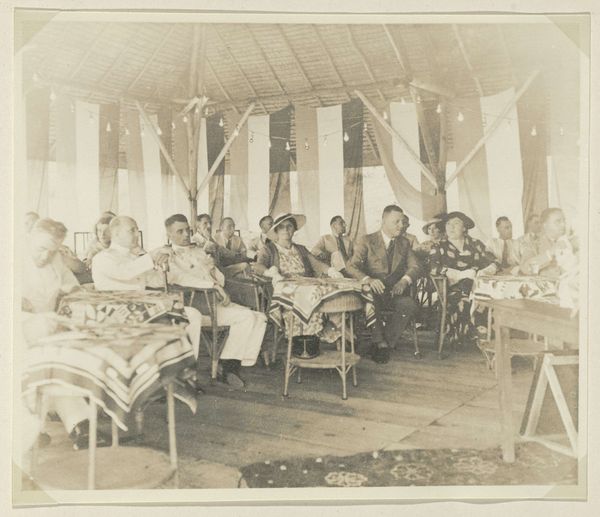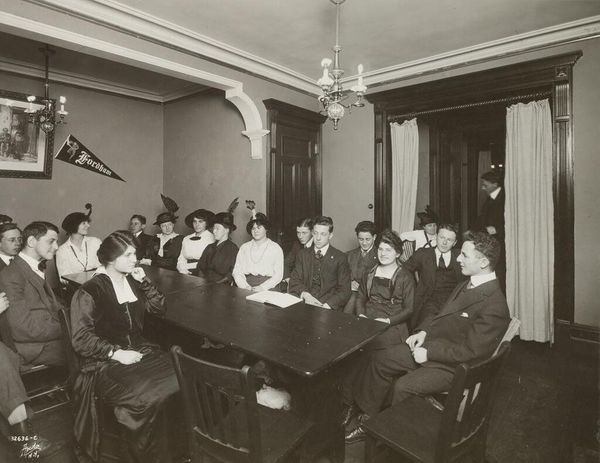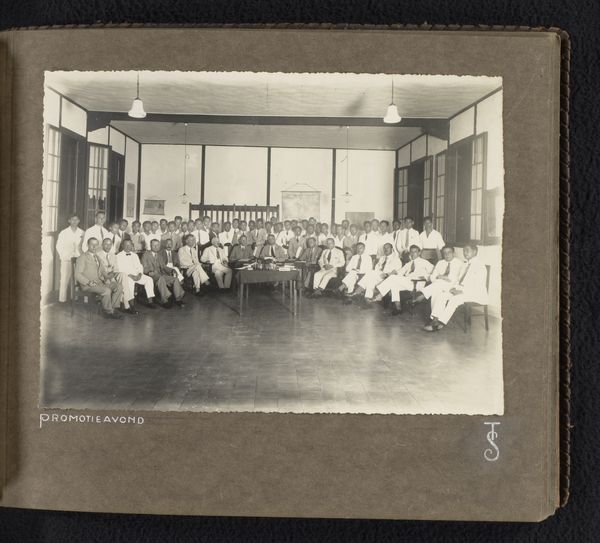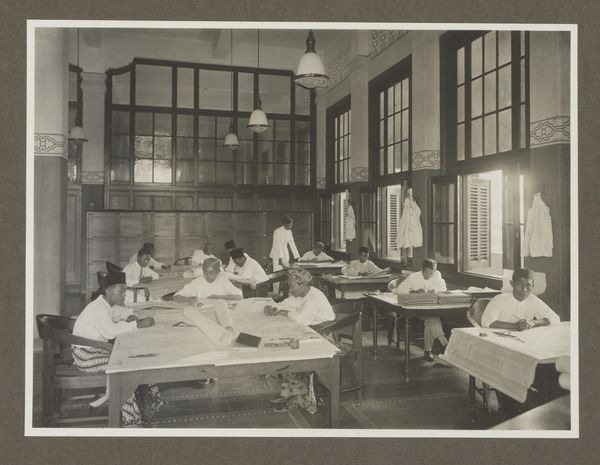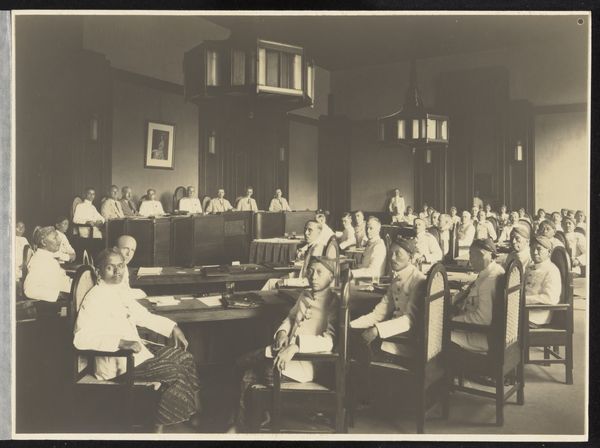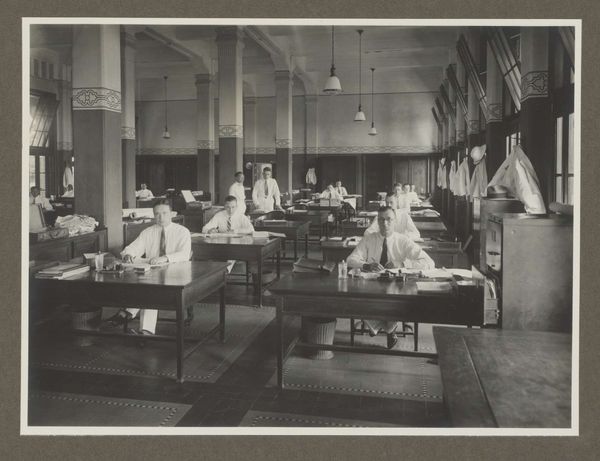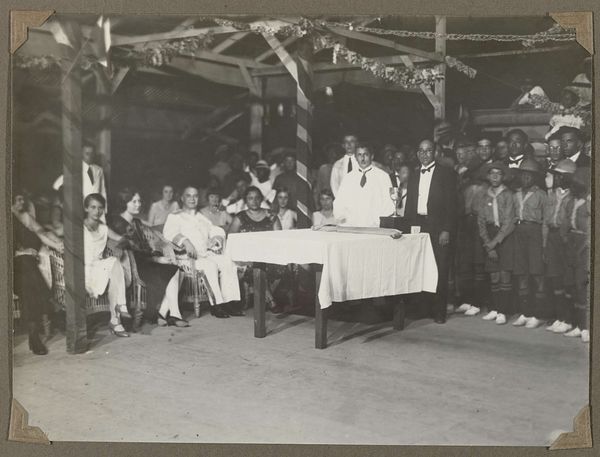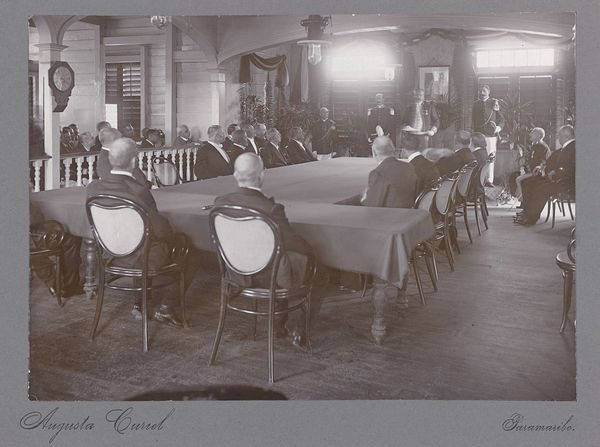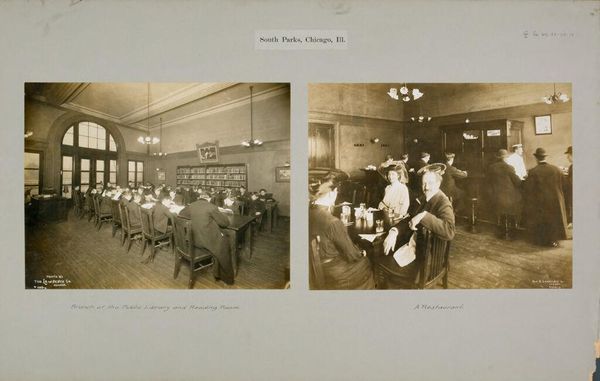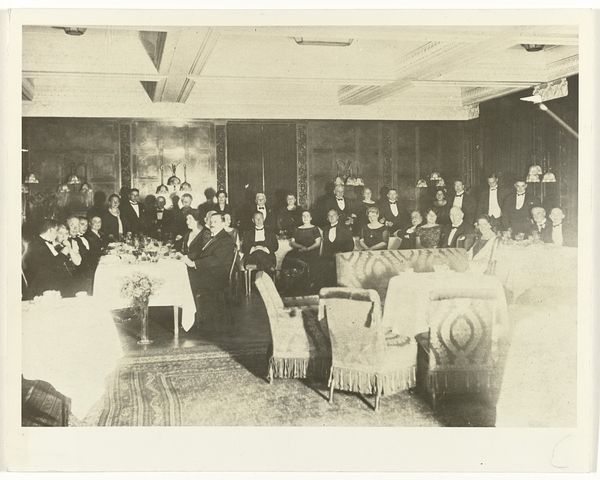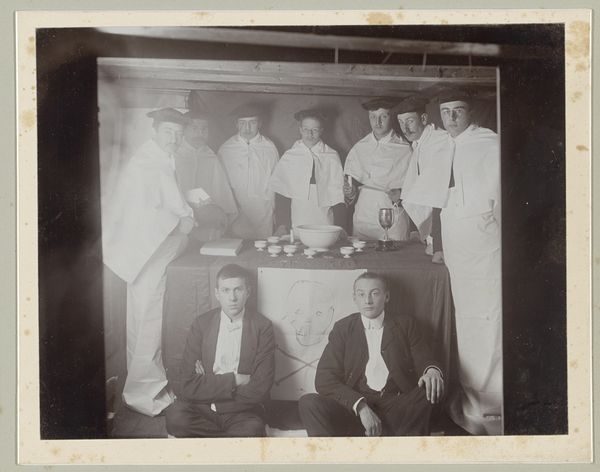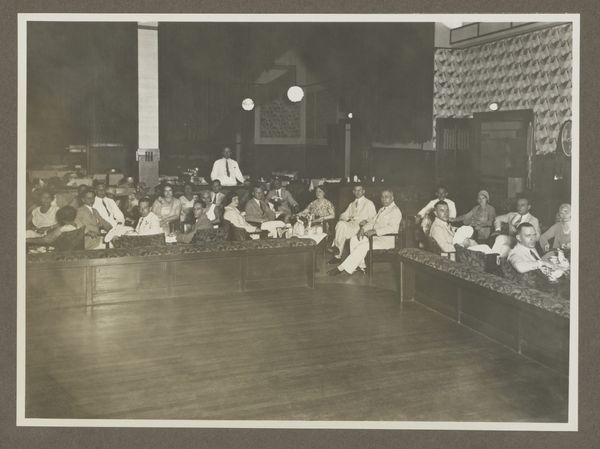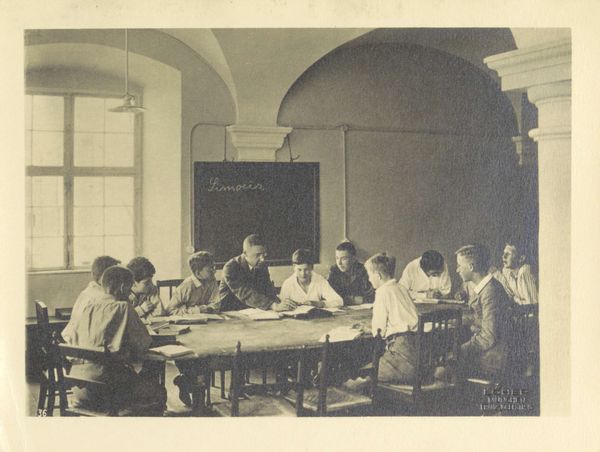
photography, gelatin-silver-print
#
portrait
#
print photography
#
photography
#
historical photography
#
group-portraits
#
gelatin-silver-print
#
modernism
Dimensions: height 170 mm, width 230 mm
Copyright: Rijks Museum: Open Domain
Curator: Welcome to this historical gelatin-silver print, "Half één!" created between 1931 and 1934 by Atelier Kurkdjian. Editor: My immediate impression is one of profound formality. The stark contrast of the black and white medium combined with the almost symmetrical arrangement creates an atmosphere that feels both distant and intensely observed. Curator: Indeed, the formal arrangement is central to understanding this group portrait. The use of a gelatin-silver print in modernist style offers incredible detail and tonal range. The geometry of the setting, those checkered tiles, the paneled walls, emphasizes a kind of… visual order, one could almost read a semiotic code within it. Editor: While I appreciate the composed aesthetic, I find my attention drawn to the labor implied in the photographic process. This isn't a snapshot, this is an image requiring a collaboration and awareness from all participants. I wonder about the materiality of their suits, the process by which those surfaces ended up printed and documented. How many hands were on deck when preparing to photograph "Half één!"? Curator: The subjects' garments, though similarly toned, also contribute to the composition. The different textures subtly play off of each other. Their postures denote a deliberate intention—each tilt of the head, fold in the clothing or angle of a hand tells a silent story about identity within the group. The variations on sartorial styles hint at differing degrees of authority, if we use visual hierarchy to understand the overall function. Editor: And isn't authority central here? Note the wood panelling—it suggests power, stability, and an environment crafted by the well-to-do. We should reflect on the fact that producing the physical photographic object depended on economic capital and available technology at this moment in time, even setting aside access to professional styling or social standing. Curator: To consider how all these choices contribute to the photograph as a complex web of aesthetic signs… That's quite compelling, don't you agree? The artist directs our reading, compelling us to piece together possible narratives of the collective image by design. Editor: Yes, and while acknowledging its intentionality and detail, remembering its tangible origins – the labor and the physical effort that culminates in what we're perceiving as an aesthetic achievement – I think that gives "Half één!" its power. Curator: This analysis truly heightens our understanding; a semiotic tapestry underpinned by very real threads of labour, materials, and capital, wouldn't you agree? Editor: Precisely. It gives depth to that surface observation while honoring the work and hands behind the construction.
Comments
No comments
Be the first to comment and join the conversation on the ultimate creative platform.
